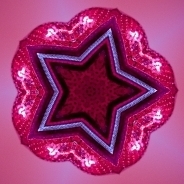Leaderboard
Popular Content
Showing content with the highest reputation on 03/29/2022 in all areas
-
In broad terms, Omniverse is a suite of freemium applications (free for personal use, payed for companies as an Enterprise version). There are applications for developing your own apps and games based on OV technology, apps for viewing archviz scenes and apps for building scenes. There's a launcher from where you can install what you need. Omniverse has its own custom realtime RTX raytracer and a fast path tracer as well as its own physics system for rigid and soft bodies. These are more or less the key features you'd use when you want to use OV for building and rendering scenes. Omniverse requires a Nvidia RTX GPU to run. All apps are based completely on USD. Omniverse apps do not accept anything BUT USD. In the background, the apps use a database core called Nucleus. This is essentially a localhost server that you can setup only for your machine or you can setup a true server to share with team mates online. There's also an app called OV drive for quickly creating a virtual harddrive in Windows Explorer that is linked to the Nucleus core. Software companies can develop connectors (= plugins / live connections) for OV. With these plugins, you then export your entire scene or single assets from the scene as USD files to the Nucleus core, e.g. by exporting them to the virtual Omniverse drive. Then you import the USD assets from the Nucleus core folder structure to your OV scene. Once exported, you can continue editing the scene in your DCC application and with every change you make, be it a modelling change, lighting, materials, adding new objects (...you name it), a re-export of the scene as USD (thus overwriting the existing USD asset) to Nucleus is triggered in the background. The nucleus core keeps track of only the differences since the last export and streams them to the OV scene, causing the assets to update in near real-time in OV. So if you are using a nucleus server that is online, one team member working from home can edit an object in Maya, another team member somewhere else does something in C4D and another person textures something in Substance Painter. With the connectors from these apps, all team members can see what the others are doing live on their own screen through the scene in OV. Because OV is based on USD, it is compatible with Pixar's USD Hydra delegate (essentially a bridge for render engines): Any render engine that supports Hydra can be plugged into OV and used for rendering the scene instead of OV's default path tracer. The main idea behind OV is thus collaboration across multiple apps in real-time where OV can serve as both a bridge and an endpoint for rendering the final scene. Because everything is a baked, exported asset, there are no incompatibilities between apps. USD supports MaterialX, so I suppose we'll see more MaterialX support across render engines in the future in addition to each engine's custom materials. Now read the initial post again and it should make more sense 🙂 Edit: German press release from Maxon if you want to know more about C4D / Redshift and OV: Team-basierte Zusammenarbeit für Maxon-Produkte jetzt mit NVIDIA…6 points
-
Vanilla Cycles still doesn't offer lightgroups or light linking. This $49 version of Cycles called K-Cycles now allows for these, simplifying the lighting workflow considerably. What is K-Cycles Ultra Lighting Interactive real-time viewport and final lighting workflow. Ultimate Lightgroups features with ease of use. Solo preview lightgroup mode. Remainder lightgroup mode. Complete accurate lighting setup. Real-time light mixing for viewport and final render Light linking in real-time with many options. Tone mapping per lightgroup. Full and fast denoising for all the lightgroups. https://blendermarket.com/products/k-cycles https://kcycles.gumroad.com/l/ByeMh E-Cycles also supports lightgroups and light linking, but is far too expensive in my opinion. Until Cycles introduces these, this is sort-of essential for anyone doing complex lighting setups such as in architectural rendering.2 points
-
VIDIA Omniverse Ecosystem Expands 10x, Amid New Features and Services for Developers, Enterprises and Creators NVIDIA Omniverse Enterprise is helping leading companies enhance their pipelines and creative workflows. New Omniverse Enterprise customers include Amazon, DB Netze, DNEG, Kroger, Lowe’s and PepsiCo, which are all using the platform to build physically accurate digital twins or develop realistic immersive experiences for customers. Enhancing Content Creation With New Connections and Libraries The Omniverse ecosystem is expanding beyond design and content creation. In one year, Omniverse connections, ways to connect or integrate with the Omniverse platform, have grown 10x — with 82 connections through the extended Omniverse ecosystem. New Third-Party Connections for Adobe Substance 3D Material Extension and Painter Connector, Epic Games Unreal Engine Connector and Maxon Cinema 4D will enable live-sync workflows between third-party apps and Omniverse. New CAD Importers: These convert 26 common CAD formats to Universal Scene Description (USD) to better enable manufacturing and product design workflows within Omniverse. New Asset Library Integrations: TurboSquid by Shutterstock, Sketchfab and Reallusion ActorCore assets are now directly available within Omniverse Apps asset browsers so users can simply search, drag and drop from close to 1 million Omniverse-ready 3D assets. New Omniverse-ready 3D assets, materials, textures, avatars and animations are also now available from A23D. New Hydra Render Delegate Support: Users can integrate and toggle between their favorite Hydra delegate-supported renderers and the Omniverse RTX Renderer directly within Omniverse Apps. Now available in beta for Chaos V-Ray, Maxon Redshift and OTOY Octane, with Blender Cycles, Autodesk Arnold coming soon. There are also new connections to industrial automation and digital twin software developers. Bentley Systems, the infrastructure engineering software company, announced the availability of LumenRT for NVIDIA Omniverse, powered by Bentley iTwin. It brings engineering-grade, industrial-scale real-time physically accurate visualization to nearly 39,000 Bentley System customers worldwide. Ipolog, a developer of factory, logistics and planning software, released three new connections to the platform. This, coupled with the growing Isaac Sim robotics ecosystem, allows customers such as BMW Group to better develop holistic digital twins. New Omniverse connections Adobe Substance 3D Material Extension: Import Substance 3D asset files into any Omniverse App. Adobe Substance 3D Painter Connector: Apply textures, materials, and masks or UV mapping onto 3D assets with Adobe Substance 3D Painter, releasing March 28. Unreal Engine 5: Send and sync model data and export Nanite Geometry to Omniverse Nucleus. e-on VUE: Create beautiful CG environments including skies, terrains, roads, and rocks. e-on PlantCatalog: Export a plant, enable live-sync, and edit in real time. e-on PlantFactory: Create ultra-realistic, high polygon plants. Maxon Cinema 4D: USD is now supported. Use the app in a connected workflow with OmniDrive. Ipolog: Perform material provisioning and production logistics for manufacturing planners. LumenRT for NVIDIA Omniverse, powered by Bentley iTwin: Allows engineering-grade, millimeter-accurate digital content to be visualized on multiple devices and form factors. Omniverse Enterprise Features and Availability Broadens New updates are coming soon to Omniverse Enterprise, including the latest releases of Omniverse Kit 103, Omniverse Create and View 2022.1, Omniverse Farm, and DeepSearch. Omniverse Enterprise on NVIDIA LaunchPad is now available across nine global regions. NVIDIA LaunchPad gives design practitioners and project reviewers instant, free turnkey access to hands-on Omniverse Enterprise labs, helping them make quicker, more confident software and infrastructure decisions. Latest Omniverse Technologies and Features Major new releases and capabilities announced for Omniverse include: New Developer Tools: Omniverse Code, an app that serves as an integrated development environment for developers and powers users to easily build their own Omniverse extensions, apps or microservices. DeepSearch: a new AI-based search service that lets users quickly search through massive, untagged 3D asset libraries using natural language or images. DeepSearch is available for Omniverse Enterprise customers in early access. Omniverse Replicator: a framework for generating physically accurate 3D synthetic data to accelerate training and accuracy of perception networks — now available within Omniverse Code so developers can build their own domain-specific synthetic data engines. OmniGraph, ActionGraph and AnimGraph: major new releases controlling behavior and animation. Omniverse Avatar: a platform that uses AI and simulation technology to enable developers to build custom, intelligent, realistic avatars. Omniverse XR app: a VR-optimized configuration of Omniverse View that enables users to experience their full-fidelity 3D scenes with full RTX ray tracing, at 1:1 scale, coming soon. New versions of Omniverse Kit, Create, View and Machinima.2 points
-
Completly agree with everything. It really needs some sort of cache. Also the line display vs geometry wasn't much of performance booster. But for a first release i think its a nice plugin from insydium2 points
-
Nvidia has released Canvas 1.2, adding support for style variations. Users can choose from 10 variants of each readymade visual style, making it possible to adjust the look of an image while preserving the overall theme. Style images and variations are also now saved in project files. Based on Nvidia’s GauGAN 2 web app, Canvas is GPU-accelerated via the Tensor machine learning cores in Nvidia GPUs, and requires a RTX card. However, if you’re using an older GPU – or an AMD, Intel or Apple processor – you can still try the underlying technology online, via Nvidia’s GauGAN 2 web app. It isn’t as slickly presented, but it covers a wider range of landscape types, including buildings and other man-made structures, and also supports natural text input. System requirements Canvas is available in beta for Windows 10. You need a Nvidia GeForce RTX, Titan RTX, Quadro RTX or RTX GPU with version 471.68+ of the Nvidia GeForce, Studio or Quadro driver to use it. It’s a free download.1 point
-
@Daniel SeebacherThanks a lot, that is a premium explanation post! 👍1 point
-
I spent a little time with Taiao this morning. My very preliminary finding: Good: It's easy to use, quite self-explanatory Presets for trees and plants included Forces (like wind) apply to whole tree/plant Quick results Not so good: Lots of fiddling needed to get from quick result to good result No PBR-materials included Wind on a tree? -> Welcome to 1 fps-country. Forces can't be cached My personal summary: Wind & Forces where the main appeal to me. Otherwise I could just use canned assets with much higher quality and much less time to setup. Performance is typical of Insydium's tools, though. Ok in the beginning, but it quickly becomes really painful. I don't think I'm going to use it anytime soon...1 point
-
Oh man thank you so much! That was seriously driving me crazy. Surprised more people don't come across that as an issue because I couldn't find a similar post about it online. Anyways, thanks for the help. Cheers!1 point
-
Seems like whenever i post a question in here, I find the solution myself not so long after 😛 File attached if anyone is interested. Video file also 2022-03-28 22-13-12.mkv xP - Fake xpInfectio Triggerred with xParticles.rar In the xpScale - `Parameter to Change` should be set to SCALE, and in the mapping section Parameter=Scale Value map to Age (the longer the age the slower and smoother the growth What controls the distribution of new particles is the Weight map loaded in the Emitter>Object>EmitterShape set to Object>Weight map is loaded in the Selection field1 point
-
No, that's exactly the same as the top was... just apply those techniques to the bottom as well. If you really do need step by step the whole way through, then perhaps book an hour of my time to go through it with you over skype or similar - that is a service I offer... CBR1 point
-
I already expressed my great enthusiasm for the next release (based on Mat's insight here). Nonetheless, I hope for some specifics 😄 Best Redshift Integration of all DCCs It's the same roof, so C4D should have a premium RS integretion. Materials in the viewport. New node system with all functionality. Material previews rendering with IPR. OCIO-aware Picture Manager. A one-click "Render beauty + AOVs and export everything to After Effects and rebuild there automatically". Add RS Materials to the Content-Library-Assets. Make RS the standard renderer. Remove the UI deadspace in the IPR. Interactive help like in C4D. Redshift RT is still very early und very unstable, but it should become C4D's viewport, some day. Stability This is aimed at C4D, Redshift and mainly nVidia. A "wrong" nVdidia-Driver-Version can cause troubles without end. How to know the best driver for your config? Forum exchange, try and error. Luckily, there are some really stable driver+software-combinations everytime I had to jump these hoops, but the journey is *SO* painful. Bugs This was the only new feature of R25 😄 Come on now, really Maxon, up your QA-game! Also, there should be *much* longer bugfixing-support for owners of a perpetual license. Release cycle Honestly, I'd rather have only 1 big update per year. Less hassle updating stuff, finding working drivers etc. Maybe more time for QA on your side? So far, I can't see any benefit of the biannual release cycle, only that it apparantly forced you to do the fubar R25-release, needlessly so. Performance This is a broad field. I don't want to dive into details here, I want to express a broad wish. Currently, we are confined to rather small/medium scenes. 2 Characters, a landscape tile, some decoration and boom, you're already operating at the edge of C4D's performance envelope. Very quickly, work becomes about managing ressources, not making artistic decisions. And trying to hide the seams of the performance envelope all the time 😕 I wish we had some kind of streaming engine for geo. A unified simulation system. A unified cache system. A clear feedback system, that shows me what is computationally expensive and what isn't. I don't know, if the "core rewrite" adresses any of that, I just want to feel some realtime-magic in C4D. zBrush It has by far the best scultping "feel" of any app I tried. It's a mindblowingly good app, as demonstrated again and again by zBrush-artists. But, for the love of all UX/UI saints, zBrush sorely needs a complete UX/UI overhaul. That's one of Maxons strengths. zBrush-Artists defend the current UI, but Im quite sure that is a form of Stockholm syndrome. Maybe offer an "Easy Mode" alternative, here. A very strong "GoZ"-implementation is also obligatory here. My last point is not software related, but regarding communication. Once, an attempt has been made by Maxon towards more transparency. Anyone remember the three-and-a-half blog posts? 😄 Ok, now do that again, but thoroughly. Just do it like the Redshift team. Have a nice, active forum with Premium sections for paying customers. Talk with us about problems. Listen to our wishes, in a way that we know we are heard. Share at least a broad roadmap for the next releases. This is by far the biggest problem with Maxon and C4D. You guys are almost completely opaque, and that's a severely outdated mindset for a company that relies on the thriving and the goodwill of a community of communicators. And communicators we are, visual, textual, social. Talk to us, please! 🙂1 point





